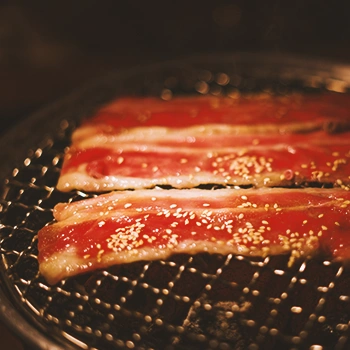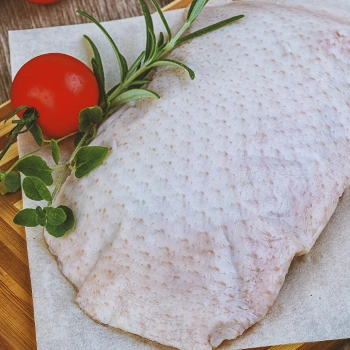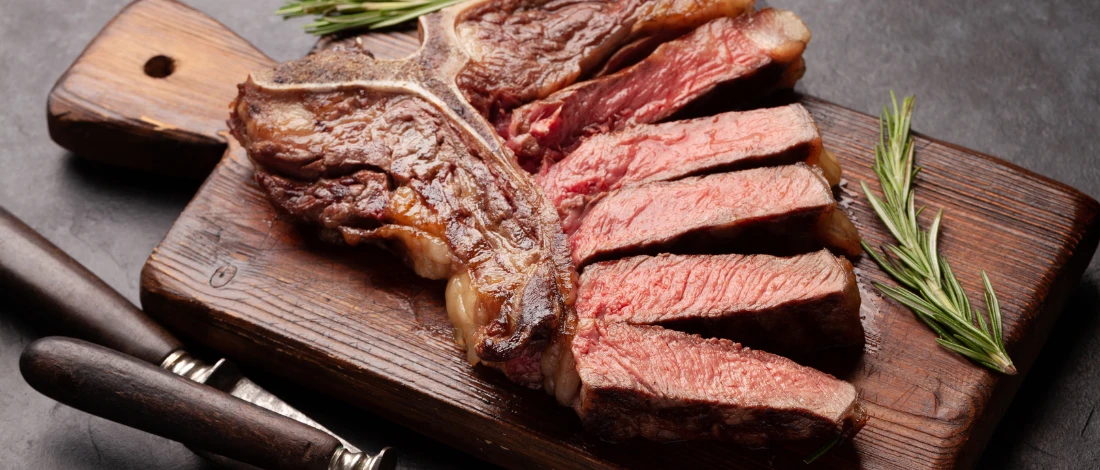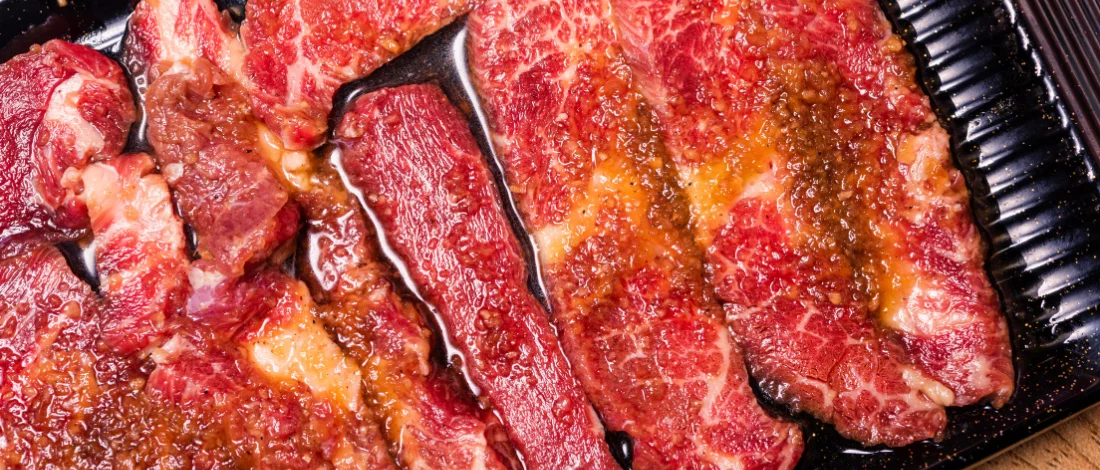As a barbeque lover, Korean BBQ is the favorite barbecue I order during eat-outs with my friends. Sometimes, when I feel a bit extra, I even make it at home for family gatherings.
Today I'll share everything you need to know about making Korean BBQ at home, the ingredients you need for the Korean sauces, and give you the best side dishes to pair it with.
Let's get started.
Quick Summary
- Korean BBQ meat entails the communal cooking of different meats on a grill centered on the table.
- Korean BBQ is a famous historical dish for Koreans.
- Seaweed, Kimchi, and potatoes are some of the banchan to pair with Korean grilled meat.
- If you're on a tight budget but still want to make a Korean BBQ at home for your family and friends, check out these best BBQ tool sets under $50.
What You Need For Korean BBQ
Korean barbecue has been a legendary delicacy for Koreans since the Goguryeo era (37B.C.–668 A.D.) [1]. It requires time and skill to master, but it eventually pays off.
Here's what you need to make it.
1. Grilling Tools

The grill is the focal point of a Korean barbeque. Instead of being off to the side, it is positioned in the center of the table so you can see and take part in the action.
In Korean cuisine joints, the grill is integrated into the table, but you can achieve the same setting at home by utilizing an indoor transportable grill or a compact butane burner with a grill plate.
Butane is typically less expensive than propane, making the butane burner much more practical for this BBQ. Also, butane fires hotter, so you'll get a better flame to sear your meat well.
You'll also need the following in your Korean kitchen toolbox:
- Cooking Tongs: To cook and serve the hot meat.
- Kitchen Scissors: To slice the beef into small servings for all your guests.
- Bowls: To distribute sauces and the other banchan to everyone.
Also Read: Best Korean BBQ Grills
2. Meats
It's not a Korean BBQ without different meats. Small, tender meats like beef short ribs, pig belly, and chicken are frequently used when you want to cook and eat Korean BBQ.
Big chunks of grilled meat like whole chicken, brisket, whole chickens, and pork ribs are also used in the U.S.
3. Vegetables

Vegetables you need for making wraps for your KBBQ Include:
- Perilla: While in the local Korean grocery store, pick up some perilla. It is a broad, flat leaf occasionally referred to as sesame leaves. Despite being a member of the mint family, perilla tastes more like fresh Japanese shiso. It has a herbaceous flavor with a trace of anise.
- Lettuce: To roll up your marinated meats in little bite-sized portions, you'll have to have a lot of lettuce and parsley. I enjoy adding different lettuce types like an iceberg, romaine, and Greenleaf [2]. Ideally, any lettuce you like can be an excellent wrap for Korean barbeque.
- Chili: KBBQ wouldn't be complete Korean food without extra heat. While you can get ready-made Korean chilies from different Asian grocery stores, I love to use sliced Korean green chilis for my KBBQ. You could also use sliced jalapenos and habaneros.
- Onions: A large quantity of finely or roughly diced onions adds texture, flavor, and zest. You can get a little creative and make an onion slaw to pair with your steaks. Combine the shredded onions with sesame oil, soy sauce, honey/brown sugar, salt, and pepper.
- Fresh veggies: I like to add freshly diced cucumber and carrots for extra crunch and color.
4. Sauces
Alternatively to purchasing readymade sauces and marinades from an Asian grocery store, you can prepare your own at home.
I recommend that you add a little water to the same marinade. Diluting the flavor is a good idea because it can be a touch intense.
Steps To Making Korean BBQ

The main thought behind Korean BBQ is to roast various kinds of meat in the middle of the table, wrap them in lettuce leaves or rice paper, dunk them in sauce, and serve them with different side dishes (banchan).
Let's take a detailed step-by-step guide on how to make Korean BBQ:
- Prepare the veggies, buy the banchan, and make the sauces a day or a few hours before you intend to eat. You can also go ahead and get some drinks to go with your KBBQ.
- Prepare the noodles and rice when you're ready to eat, and then arrange the dipping sauces, banchan, rice, and noodles on the table.
- Fire up your grill.
- Spray a little oil or fat on the grill.
- Add some beef slices or chicken bulgogi once it's heated. Flip the meat as necessary.
- Before serving, take the cooked portions off the grill plate, wrap, garnish, and sauce them. The cooked pieces can also be removed off the grill and put on a platter. Eat, cook, and then repeat.
Additional Tips
Making a Korean BBQ meal involves knowing which cuts should be cooked first and how frequently to turn the pieces over when grilling meat.
It's best to start with non-marinated meats and work your way up to the fatty, marinated, grilled meats.
If you're starting with beef, use high heat, sear the meat on one side before flipping it over to finish cooking it to medium-rare or medium.
I prefer to turn pork about four times on each side because it is higher in fat and can become crispier.
"Korean BBQ is more of the style of communal grilling than it is the Korean BBQ ingredients you use to cook and eat."
- Deuki Hong, Chef, Korean Cookbook Author
To make my KBBQ a little extra, I always use a particular salt, Japanese sansho salt with a bit of sesame oil and freshly ground black pepper.
If you can't get your hands on this salt, Truffle salt will do just fine. When the meat is well-cooked, lightly sprinkle your salt mixture to season well.
If you want extra juice for your pork meat, grill the meat together with Kimchi (a mixture of fermented veggies like radish, cabbage, and cucumbers). This adds extra flavor and texture to the pork meat.
Best Meats For Korean BBQ
The best KBBQ starts with good cuts of meat.
1. Pork Belly

Pork belly, also known as samyeopsal, which means "fat layers," is the most well-known and tasty pork cut for KBBQ.
It is just a complete Lechon kawali cut sliced into bite-sized portions. These broad strips ensure that every area cooks quickly on high heat to crisp up the top fat layer.
What's left is a juicy, char-roasted chunk of pork, which makes Korean bbq restaurants famous to barbecue fans.
2. Beef Short Ribs (Galbi or Kalbi)
Galbi, occasionally also called kalbi, are hefty beef short ribs most well-known and adored in the world of Korean barbecue.
Galbi, found in any Korean market, is traditionally prepared with a ganjang-based seasoning and grilled over a wood fire [3].
Galbi is wrapped with lettuce and covered with chili sauce for extra heat. Here in the U.S, it's known as L.A. galbi, sliced across the rib to produce longer, slimmer strips of beef.
3. Duck Meat

Grilled duck, maybe the blandest slice in the Korean BBQ repertoire, must be heavily seasoned with a wide range of condiments to improve the flavor; otherwise, it will taste like chicken.
The creaminess and taste of a seasoned perilla leaf complement unseasoned duck excellently.
These spicy and sour leaves are an absolute must-have for more seasoned BBQ diners.
4. Boneless Chicken
You may vary the meats by marinating boneless and fileted chicken slices in the kalbi and bulgogi sauce seasonings. I recommend using breasts filets and chicken thighs marinated with your tasty BBQ sauces.
You may alternatively leave the chicken meats unmarinated and have your visitors dip the bite-sized chicken slices in the condiments you'll be serving on the side.
5. Bulgogi

Seasoned thin pieces of beef brisket, sirloin, and ribeye are used in Korean BBQ meats. The traditional bulgogi seasoning, which refers to "fire meat," comprises rice wine, toasted sesame oil, soy sauce, sugar, and garlic.
Stir-frying the meat is also another famous way of preparing bulgogi. The completed meal is usually served on a plate of rice or pasta with scallions and mushrooms on top.
6. Beef Tongue
The beef tongue, also called hyuh mit gui, is not served whole. Instead, thin-cut rounds with random marbling are presented, sometimes sitting flat or curled into tubes.
7. Pork Skirt-Meat
Due to its dark hue and meaty taste, this slimmer cut of pork, also known as galmaegisal, is sometimes likened to beef.
In certain Korean restaurants, the grill used for this meat cut has a thick ring around the exterior filled with Kimchi, eggs, and cheese. The pork and the eggs cook at the same pace and are eaten together.
Readers Also Like: BBQ Pulled Pork Egg Roll Recipe
Korean BBQ Sauces

Korean BBQ isn't complete without these delicious and spicy sauces.
1. Wasabi Sauce
With char-grilled marinated beef or pork, this sauce pairs incredibly well. I genuinely enjoy it, most likely because I have always paired this sauce with char-grilled BBQ over other types of meat.
Instead of putting the char-grilled beef in a lettuce wrap, I often dunk it into this glaze and enjoy it.
But if I prepare a lettuce wrap, I also include the Ssamjang sauce, so I have two dips.
Ingredients
- 1 Tbsp water
- 1 Tbsp sugar
- 2 tsp soy sauce
- 1 tsp white vinegar
- Toasted sesame seeds
- A dab of wasabi puree
- Freshly shredded green onions
To make Wasabi:
- Put all the first four ingredients in a bowl and mix well until all the sugar melts into the mixture.
- As required, dollop the sauce onto a serving platter for a single dip using a 1 Tbsp measuring spoon.
- Throw in the thinly sliced green onions and add the wasabi puree on the side.
2. Ssamjang Sauce
Ssamjang, which means "dipping sauce" in Korean, often consists of grilled Korean BBQ bulgogi beef in a bed of lettuce, perilla, or steamed cabbage, among other ingredients [4].
Sticks of carrot or cucumber can also be dipped. Although this dipping sauce may be hot or not, Koreans use the word "Ssamjang," referring to a spicy dipping sauce.
Ingredients
- Sesame oil
- Minced garlic
- Minced onion
- Korean chili paste
- Korean soybean paste
- Chopped green onion
Mix all ingredients in a bowl and stir until well-combined to make Ssamjang.
For convenience, you can still use store-bought ssamjang. But creating your own at home is much quicker and fresher, and you have more control over the ingredients and the amount of spice and sweetness you prefer.
3. Salt-Pepper Sesame Oil Sauce
Grilled scallops and beef or pork belly that hasn't been marinated work well with this sauce.
Compared to other Korean sauces, this sauce is way easier to make and has a milder, more delicate flavor that allows you to appreciate the main ingredients- meat,scallops-better.
Ingredients
- Sea salt
- Toasted Sesame oil
- Toasted Sesame seeds
- Freshly ground black pepper
To make this sauce:
Directly place the ingredients mentioned above on a serving plate. Prepare the dips separately and serve them on a different dip serving plate if you intend to feed more guests.
5 Best Side Dishes

Here are my favorite best banchan (side dishes) to complement your KBBQ.
- Kongnamul: This soybean sprout is a culinary vegetable in many Korean dishes. You can season it with sesame oil, soy, rice vinegar, scallions, and garlic to serve with your Korean barbecue.
- Kimchi: As mentioned earlier, Kimchi is a mixture of fermented vegetables. It pairs well with a Korean barbecue meal because it's made of various seasonings like gochugaru, garlic, spring onions, ginger, and jeotgal. You can make a Kimchi pancake to eat with the extra meat sauces.
- Potatoes/gamja: This is one of my favorite side dishes for Korean culture barbeque. You can serve your barbecue with any potato dish. Braised potatoes with a sweet and savory flavor, potato salad, scalloped potatoes, twice-baked potatoes, mashed sweet potatoes, and roasted red potatoes, among others.
- Danmuji: This dish, also known as the yellow pickled radish, is used in making Korean seaweed rice rolls. It has a tangy, crispy, and sweet flavor to it.
- Gim/Seaweed: You can purchase a variety of seaweed banchan, including wakame, flavored seaweed salads made with baked seaweed, and seaweed stems.
Japanese BBQ at Home
You need special equipment, utensils, meat, vegetables, and yakiniku sauce for Japanese BBQ at home.
The most important item you need is a portable grill that can be used indoors. For example, you can get an indoor grill.
Yakiniku is cooked either on amiyaki (a grill over a wire net) or teppanyaki (a grill over an iron plate). These are charcoal grills.
Tip: If there are any Japanese stores near you, buy binchotan charcoal. This white charcoal is used in Japanese cooking, so you’ll get a more authentic flavor. Binchotan charcoal burns longer and has minimal smoke.
In terms of grilling tools and utensils, you’ll need tongs for grilling. Tongs make it easy and safe to turn the food.
Note: Japanese beef comes prepared and cut into thin strips or slices so you can toss them on the grill right away. But, if you can’t get Japanese beef, you’ll need a carving knife to cut the meat into small portions before grilling.
Finally, you’ll need small side plates for each person eating the BBQ, sauce dishes for dipping the meat into, rice bowls if you serve meat with rice, and chopsticks.
No Japanese barbecue is complete without a yakiniku sauce. Combine sake, mirin, soy sauce, sesame oil, white miso, chopped garlic, and roasted sesame seeds to make yakiniku sauce.
Simmer all the ingredients in a saucepan for about two minutes. Make sure to whisk well to dissolve the miso paste, then transfer it into a bowl and serve it as a dipping sauce for meat and vegetables.
Alternatively, you can make tare, which is a salt-based sauce. This is a good choice if you’re serving miso soup with the BBQ. This sauce has a thick soy sauce flavor and includes salt, sake, and mirin.
If you don’t want to make any sauces, Japanese recipes also have versions where you can use rock salt to bring out the beef’s flavor, mustard, rice vinegar, or lemon.
Tip: Lemon pairs especially well with beef tongue.
FAQs
How Do You Make Korean BBQ Without A Grill?
You can make a Korean BBQ without a grill by using a butane tabletop burner or a portable electric frying pan.
Does Korean BBQ Taste Like Regular BBQ?
No, Korean BBQ doesn't taste like regular barbecue because of the different Korean spices and banchan used in the dish.
What Veggies Do You Need For Korean BBQ?
You need veggies like lettuce, onions, and garlic for Korean BBQ for wrapping the meat.
What Is The Difference Between Korean BBQ And American BBQ?
The difference between Korean BBQ and American BBQ is the flavor. Korean BBQ has a sweet-savory marinade, while American BBQ has a tangy, smoky flavor because of the rice wine vinegar sauce.
References:
- https://sites.google.com/site/koreanbbqfromamerica/history
- https://digitalcommons.lsu.edu/cgi/viewcontent.cgi?article=5383&context=
- https://en.m.wikibooks.org/wiki/Cookbook:Galbi&ved=
- https://www.spiceography.com/ssamjang/&ved=







